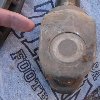FordService
Official Ford Rep
- Joined
- October 25, 2010
- Messages
- 5,281
- Reaction score
- 15
- City, State
- Dearborn, MI
- Year, Model & Trim Level
- 2014
This is a perfect example of why this community is amazing, guys! Thanks for making my job easier. 
I wanted to add that you can grab a free digital copy of the Owner Guide here:
http://Owner.Ford.com/servlet/ContentServer?pagename=Owner/Page/OwnerGuidePage
Download more than one; they’re free!
Cory
I wanted to add that you can grab a free digital copy of the Owner Guide here:
http://Owner.Ford.com/servlet/ContentServer?pagename=Owner/Page/OwnerGuidePage
Download more than one; they’re free!

Cory










